Discover Snoozecast
Snoozecast

Snoozecast
Author: Snoozecast
Subscribed: 1,730Played: 186,274Subscribe
Share
© ℗ & © 2020 Snoozecast: Stories for Sleep
Description
Snoozecast is the podcast designed to help you fall asleep.
Episodes air every Monday, Wednesday and Friday.
Learn about our premium listening options at snoozecast.com/plus, which unlocks ad-free listening to our expanded catalog, including bonus original stories.
1087 Episodes
Reverse
Tonight, for our next Spooky Sleep Story, we’ll read Phantasmagoria, a narrative poem by Lewis Carroll first published in 1869. A polite Ghost drops in after midnight and proceeds to instruct his puzzled host in the finer points of spectral etiquette.
Each October we bring back Snoozecast’s Spooky Stories Series—now in its seventh year—our annual run of classics with a candlelit vibe: ghostly, atmospheric, and cozy rather than truly scary. Think creaking floorboards and wry smiles, not jump scares.
Best known for Alice’s Adventures in Wonderland, Carroll turns domestic life into mock-epic ritual here, mixing puns with parody of Victorian manners. In seven cantos, the Ghost explains everything from haunt-house “housekeeping” to courtly forms of address—an odd, amiable manual for the afterlife delivered with Carroll’s playful logic.
Learn more about your ad choices. Visit megaphone.fm/adchoices
Tonight, as part of Snoozecast's seventh annual spooky sleep story series, we’ll read “The Haunted Orchard” written by British author Richard Le Gallienne and published in 1912.
Each October, our Spooky Stories Series features classic tales that are more atmosphere than fright, all candlelight and creaking floorboards. In this one, a quiet country house and its untended orchard hold a lingering presence; whispers of a young woman seen among the trees and a tune that seems to rise with the wind give the story its soft, ghostly pulse.
Born Richard Thomas Gallienne, the author adopted “Le Gallienne” after college, and—captivated by a lecture from Oscar Wilde—left office work to write poetry and prose. He and Wilde later struck up a brief affair and lasting friendship. Le Gallienne married three times and fathered Eva Le Gallienne, the celebrated actor–director. After settling in the United States and later on the French Riviera, he refused to write wartime propaganda and nonetheless kept publishing well into his seventies.
— read by 'V' —
Sign up for Snoozecast+ to get expanded, ad-free access by going to snoozecast.com/plus!
Learn more about your ad choices. Visit megaphone.fm/adchoices
Tonight, we shall read the next part to Persuasion, the last novel fully completed by Jane Austen, and published in 1817. The story concerns Anne Elliot, an Englishwoman whose family moves in order to lower their expenses, by renting their home to an Admiral and his wife.In the last episode, Anne visits her old school friend Mrs. Smith in Westgate-buildings. Though Mrs. Smith lives in poverty and poor health, she is cheerful, resourceful, and glad for Anne’s company. As their conversation turns to acquaintances, Mrs. Smith seems unusually hesitant when Mr. Elliot’s name arises. At first, she holds back, saying little. But upon realizing how closely Anne is now connected to Mr. Elliot, she finally decides it is her duty as a friend to speak. We will pick up at this point in their conversation.
Learn more about your ad choices. Visit megaphone.fm/adchoices
Tonight, as we are beginning the month that ends with Halloween, we’ll read the first half of “The Diamond Lens”, a short story by Fitz James O’Brien first published in 1858.Every October, Snoozecast features our Spooky Stories Series—tales with a spectral or uncanny quality, meant to set a certain mood, without keeping you awake. This marks our seventh year of SSS, and we’re beginning with something more curious than chilling. O’Brien’s tale is steeped in the oddity of early scientific obsession, centering on microscopy—the study of the unseen through magnification. In the author’s hands, the microscope becomes not just a tool of science, but a gateway to another world, blurring the line between discovery and delirium.
Learn more about your ad choices. Visit megaphone.fm/adchoices
Tonight, we’ll read the 33rd chapter of “Anne of Green Gables”, the classic 1908 novel by Lucy Maud Montgomery. This chapter is titled “The Hotel Concert”
In the last episode, Anne anxiously awaits the results of the Queen’s entrance examinations along with her friends. When the list is finally published, it reveals that Anne has come in first among all the candidates on the Island, with Gilbert Blythe placing second. Her friends Diana and the Barry family celebrate her success, and Matthew and Marilla express their quiet pride. For Anne, this achievement feels like the fulfillment of her long-held academic dreams and the beginning of new possibilities for her future.
— read by 'N' —
Sign up for Snoozecast+ to get expanded, ad-free access by going to snoozecast.com/plus!
Learn more about your ad choices. Visit megaphone.fm/adchoices
Tonight, for our monthly Snoozecast+ Deluxe bonus sleep story, we’ll read the opening to Mark Twain’s “A Connecticut Yankee in King Arthur’s Court” published in 1889. While we at Snoozecast adore ALL our listeners equally, our monthly bonus episodes like this one are specifically made for our Snoozecast+ Deluxe premium subscribers.
If you are not a Deluxe subscriber, you will here a trimmed version of the story. To learn more about our 2 premium subscription options, go to snoozecast.com/plus. As a non-Deluxe listener,
Tonight’s satirical novel tells the story of Hank Morgan, a 19th-century engineer from Hartford, Connecticut, who, after a blow to the head, finds himself transported back in time to the England of King Arthur.
The book was one of the earliest major works of time-travel fiction, predating H. G. Wells’ The Time Machine by six years. At the same time, it sat firmly in Twain’s style: humorous, biting, and rooted in American sensibilities. Though filled with fantastical elements like knights, castles, and magic, the story is just as much a sharp social commentary as it is an adventure.
When first published, the novel stirred controversy for its irreverent treatment of Arthurian legend, but over time it has come to be recognized as a clever and influential blend of satire, science fiction, and historical fantasy.
— read by 'V' —
Sign up for Snoozecast+ to get expanded, ad-free access by going to snoozecast.com/plus!
Learn more about your ad choices. Visit megaphone.fm/adchoices
Tonight, we’ll read the second half of "The Adventure of the Greek Interpreter," one of the 56 Sherlock Holmes short stories written by Sir Arthur Conan Doyle. The first half aired last week.
In this tale, we were introduced to Sherlock’s elder brother, Mycroft—whose deductive gifts may surpass even Sherlock’s, though he lacks the drive to apply them in the field. Mycroft brings Holmes into the confidence of his neighbor, Mr. Melas, a professional interpreter who recently endured a disturbing ordeal. Melas was hired under mysterious circumstances, blindfolded, and taken by cab to an unknown house, where he was compelled to translate under threats from a ruffian named Latimer.
We rejoin the story as Melas recounts to Holmes what he observed inside the house, despite the attempts to conceal its location.
— read by 'N' —
Sign up for Snoozecast+ to get expanded, ad-free access by going to snoozecast.com/plus!
Learn more about your ad choices. Visit megaphone.fm/adchoices
Tonight, we’ll read the first half to "The Adventure of the Greek Interpreter", written by Sir Arthur Conan Doyle. It is one of 12 stories in the cycle collected as “The Memoirs of Sherlock Holmes”.
Out of all 56 Sherlock stories, Doyle ranked "The Greek Interpreter" seventeenth in a list of his nineteen favorites. This tale is especially notable for introducing us to Sherlock Holmes’s older brother, Mycroft, whose intellect may even outshine Sherlock’s own, though he lacks his brother’s energy for detective work in the field. Mycroft instead spends his days in government offices and evenings at the Diogenes Club, a setting that itself became an iconic part of the Holmes universe.
When it was first published in 1893 in The Strand Magazine, the story added an intriguing new dimension to the detective’s world, showing readers that Holmes’s brilliance was not entirely unique within his family. The case itself revolves around a kidnapped interpreter and a sinister plot, combining Doyle’s flair for atmosphere with clever twists of reasoning.
— read by 'N' —
Sign up for Snoozecast+ to get expanded, ad-free access by going to snoozecast.com/plus!
Learn more about your ad choices. Visit megaphone.fm/adchoices
Tonight, we’ll read the next chapter of “Good Wives” written by Louisa May Alcott titled “Under the Umbrella”. This is also known as the second half of the “Little Women” novel and is considered the 46th chapter as part of that work as a whole.
In our last chapter, “Daisy and Demi,” Meg’s twins become the delight of the March household. Meg devotes herself to their care, while John takes special pride in his son, dreaming of the man he will grow into.
The babies charm the entire family—Jo, at first unsure of them, warms up and plays the lively aunt, while Laurie and the others also share in the joy of helping raise the little one.
— read by 'V' —
Sign up for Snoozecast+ to get expanded, ad-free access by going to snoozecast.com/plus!
Learn more about your ad choices. Visit megaphone.fm/adchoices
Tonight, we’ll read about the history of jewelry around the world, from Jewels and the Woman written by Marianne Ostier and published in 1958.
Ostier was the principal designer and artistic driving force behind Ostier Inc., the New York jewelry firm she founded in 1941 with her husband, Oliver. Marianne was an accomplished painter and sculptor before her marriage, while Oliver came from a distinguished line of Austrian court jewelers. The couple emigrated to the United States to escape war, where they rebuilt their lives and careers.
Their firm became known for its distinctive approach to jewelry design. The workshop specialized in bespoke commissions—one-of-a-kind pieces crafted for private clients, often film stars, collectors, or patrons of the arts.
The book reflects Marianne Ostier’s deep understanding of both the artistry and the history of jewelry. In it, she traces how cultures across centuries and continents have used ornaments not merely as decoration, but also as symbols of power, wealth, protection, and devotion. From ancient amulets and royal regalia to modern design innovations, the story of jewels is inseparable from the story of civilization itself
— read by 'N' —
Sign up for Snoozecast+ to get expanded, ad-free access by going to snoozecast.com/plus!
Learn more about your ad choices. Visit megaphone.fm/adchoices
Tonight, we’ll read all about gemstones from the book Jewels and the Woman, written by Marianne Ostier and published in 1958.
Marianne Ostier was not only an author but also a celebrated jewelry designer in mid-20th century New York. Along with her husband, she ran a renowned atelier that catered to an international clientele, including film stars, royalty, and collectors. Her training as a painter and sculptor in Vienna gave her designs a distinctive artistic sensibility, blending classical elegance with modern lines.
The history of gemstones is as fascinating as their appearance. Ancient cultures ascribed protective and mystical powers to stones, such as amethyst for clarity of mind, or turquoise for safe travel. Over centuries, classification systems emerged to group gems by their mineral composition, as well as their beauty and rarity. Beyond color, jewelers also considered “water”—a poetic term describing the clarity and brilliance of the stone. A gem of “first water” is one of near-perfect transparency, prized above all others.
— read by 'V' —
Sign up for Snoozecast+ to get expanded, ad-free access by going to snoozecast.com/plus!
Learn more about your ad choices. Visit megaphone.fm/adchoices
Tonight, we’ll complete the 1928 children's book by A. A. Milne “The House at Pooh Corner” with the last section titled “IN WHICH Christopher Robin and Pooh Come to an Enchanted Place and We Leave Them There”.
In the last episode, Owl’s house had blown down, so Rabbit sent everyone searching for a new one while Pooh tried to make up a song about it, which turned instead into a long hum praising Piglet’s bravery during the storm. Eeyore, feeling left out, announced he had found Owl a new home—but it turned out to be Piglet’s. Thinking of Pooh’s song, Piglet did a noble thing and offered it anyway. Christopher Robin gently agreed, and Pooh promised Piglet could live with him. So Owl got a house called The Wolery, and Piglet discovered that bravery sometimes means giving up what’s yours—and finding comfort in a friend’s paw to hold.
— read by 'N' —
Sign up for Snoozecast+ to get expanded, ad-free access by going to snoozecast.com/plus!
Learn more about your ad choices. Visit megaphone.fm/adchoices
Tonight we’ll read another Australian fairy tale called “The Fairy City” written by Hume Cook and published in 1925. This story can stand independently on its own, or as a follow up to "The Magic Well" episode that we aired last week.
James Newton Haxton Hume Cook, the author, was an Australian politician who served in Parliament for almost a decade. Beyond his political career, he wrote collections of fairy tales that blended imaginative storytelling with touches of local color, reflecting the desire of early twentieth-century Australians to see their own landscapes and culture represented in children’s stories.
“The Fairy City” is particularly curious in that it draws on imagery of architecture and civil engineering—disciplines often thought of as practical and technical—yet here given a whimsical treatment. Civil engineering, as a field, is one of humanity’s oldest pursuits, shaping daily life through bridges, roads, canals, and other public works. By weaving these concepts into a fairy tale, Cook turned topics usually reserved for city planners and engineers into something children could delight in, imagining a fantastical metropolis where fairies themselves might dwell.
— read by 'V' —
Sign up for Snoozecast+ to get expanded, ad-free access by going to snoozecast.com/plus!
Learn more about your ad choices. Visit megaphone.fm/adchoices
Tonight, we’ll read from “Lessons in Chalk Modeling, the New Method of Map Drawing” written by Ida Cassa Heffron and published in 1900.
At the turn of the twentieth century, education was undergoing rapid changes. Teachers sought creative ways to engage students in subjects that were often taught by rote memorization. Geography, in particular, was considered a cornerstone of a well-rounded education, yet it was sometimes reduced to reciting capitals and drawing borders. Heffron’s work introduced a tactile and visual method known as “chalk modeling,” in which teachers could draw raised relief maps directly on the blackboard to show mountains, rivers, and valleys in a more dynamic way.
Chalk modeling made classrooms more interactive, helping students imagine landscapes and physical features in three dimensions rather than flat diagrams. It reflected the broader educational trend toward “learning by doing,” a movement championed by reformers such as John Dewey. This method not only made lessons more engaging but also encouraged observation and critical thinking—skills at the heart of geography itself.
By situating geography in this more hands-on practice, Heffron’s book connected everyday teaching to a field that bridges human culture and natural science. Her ideas gave teachers a practical toolkit to make the world vivid on the classroom chalkboard, turning simple white lines into whole continents of imagination.
— read by 'V' —
Sign up for Snoozecast+ to get expanded, ad-free access by going to snoozecast.com/plus!
Learn more about your ad choices. Visit megaphone.fm/adchoices
Tonight, we shall read the next part to Persuasion, the last novel fully completed by Jane Austen, and published in 1817. The story concerns Anne Elliot, an Englishwoman whose family moves in order to lower their expenses, by renting their home to an Admiral and his wife.
Austen began writing Persuasion in 1815, during a period of declining health, yet the novel’s style shows a maturity and restraint distinct from her earlier works. Many readers have noted its quieter, more autumnal tone—reflecting themes of second chances, endurance, and the slow rekindling of love. It was published posthumously along with Northanger Abbey, and stands today as one of her most poignant achievements.
In the last episode, Anne is thrilled to sense Captain Wentworth’s rekindled interest in her at the concert. Mr. Elliot’s vying interest in her apparently leaves Wentworth to storm out early in vexation, and leaves Anne in astonishment.
— read by 'V' —
Sign up for Snoozecast+ to get expanded, ad-free access by going to snoozecast.com/plus!
Learn more about your ad choices. Visit megaphone.fm/adchoices
Tonight we’ll read an Australian fairy tale called “The Magic Well” written by Hume Cook and published in 1925.
Hume Cook was a politician as well as a writer, serving as a member of Australia’s Parliament at the turn of the twentieth century. Beyond politics, he had a lifelong fondness for storytelling, and eventually wrote down the tales he had invented for his three children. The result was a book called Australian Fairy Tales, where gum trees, billabongs, and local wildlife mingled with elves and sprites, firmly grounding old-world fantasy in an Australian setting.
What makes these stories unusual is their attempt to create a distinctly Australian branch of fairy lore. At the time, children’s stories were still overwhelmingly European in flavor—full of castles, cobblestones, and northern forests. By weaving in native landscapes and animals, Cook gave his children stories where fairies might hide behind eucalyptus trees instead of oaks, or guard hidden wells in the bush rather than mossy glades.
In “The Magic Well,” we’ll hear one such tale, where an enchanted spring becomes the heart of a story about discovery and wonder.
— read by 'V' —
Sign up for Snoozecast+ to get expanded, ad-free access by going to snoozecast.com/plus!
Learn more about your ad choices. Visit megaphone.fm/adchoices
Tonight, we’ll read about cooking alternatives to wheat, from the 1918 pamphlet “Foods That Will Win the War”.
Although the United States did not have food rationing in World War I as it did in World War II, it did rely heavily on propaganda campaigns at the time to persuade people to curb their food consumption.
Pamphlets like this one were part of a vast public education effort. Recipes were tailored to use corn, oats, rye, rice, and even potato flour in place of wheat, encouraging families to support soldiers overseas through their kitchen tables. These simple substitutions reflected a broader spirit of sacrifice and civic duty, where everyday meals became part of the national war effort.
Herbert Hoover, who led the Food Administration before later becoming President, became known as “the Great Humanitarian” for organizing food relief. His “wheatless” and “meatless” campaigns not only shifted American eating habits, but also demonstrated how propaganda and practical instruction could merge to shape daily life during wartime.
— read by 'N' —
Sign up for Snoozecast+ to get expanded, ad-free access by going to snoozecast.com/plus!
Learn more about your ad choices. Visit megaphone.fm/adchoices
Tonight, we’ll read the 32nd chapter of “Anne of Green Gables”, the classic 1908 novel by Lucy Maud Montgomery. This chapter is titled “The Pass List is Out”
In the last episode, Anne spent a carefree summer outdoors with Diana, as per the doctor’s advice for her health. The time in the fresh air left her revived and eager for the new school year. As autumn arrived, she threw herself into her studies under Miss Stacy’s inspiring guidance, with the looming “Entrance” exams casting a shadow over the year. Socially, Anne enjoyed parties, sleigh rides, and skating, while at home Marilla reflected with bittersweet feelings on how much Anne had grown. Anne herself became quieter, favoring thoughtful reflection over chatter, and focused on improving her writing through Miss Stacy’s critiques. With just two months before the exams, Anne worried about passing—especially in geometry—while determinedly pushing herself to succeed.
— read by 'N' —
Sign up for Snoozecast+ to get expanded, ad-free access by going to snoozecast.com/plus!
Learn more about your ad choices. Visit megaphone.fm/adchoices
Tonight, for our monthly Snoozecast+ Deluxe bonus episode, we’ll read the opening of “The Girl from Scotland Yard”, written by Edgar Wallace and published in 1932. To listen to this full episode and unlock access to our catalog ad-free, go to snoozecast.com/plus. Plus is spelled P-L-U-S.
Edgar Wallace, one of the most prolific crime and thriller writers of the early 20th century, was known for fast-paced plots and sharply drawn characters. His work often blended the intrigue of international conspiracies with the immediacy of street-level crime, creating a style that would help shape the modern detective novel.
In our story, Lady Raytham receives an unexpected visit from Miss Leslie Maughan—an unusually young and poised detective from Scotland Yard—who arrives with questions about a large, recent withdrawal from the lady’s bank account. This meeting sets in motion a chain of encounters involving Peter Dawlish, a man freshly released from prison, and a shadowy web of danger that seems to close in from every side.
— read by 'V' —
Sign up for Snoozecast+ to get expanded, ad-free access by going to snoozecast.com/plus!
Learn more about your ad choices. Visit megaphone.fm/adchoices
Tonight, we’ll read the second half of “The Story of the Herons,” from a collection titled Moonshine and Clover written by Laurence Housman and published in 1922. The first half aired last week.
In the previous episode, a princess was placed under a peculiar curse—destined to fall in love at first sight with whatever creature she saw. To protect her, her parents kept her hidden from the world, allowing only carefully supervised walks in the forest while wearing a blindfold. But a spiteful fairy intervened, and when the blindfold was removed, the princess’s eyes fell upon a solitary heron fishing in a stream. Overcome by enchantment, she loved him instantly.
Moved by their daughter’s longing, the king and queen consented to have her transformed into a heron so she could be with her chosen mate. A kindly fairy offered a small hope: if the heron could love her with the depth and devotion of a human heart, they could both regain human form. But as the story left off, news arrived that the princess had laid two eggs in her nest—an event that may bring the tale to a very different ending than anyone expected.
— read by 'V' —
Sign up for Snoozecast+ to get expanded, ad-free access by going to snoozecast.com/plus!
Learn more about your ad choices. Visit megaphone.fm/adchoices




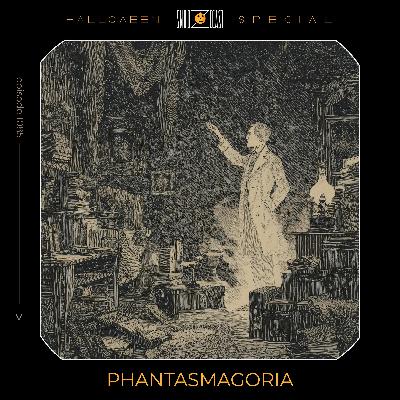
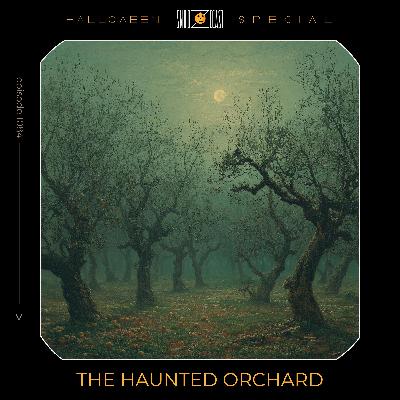
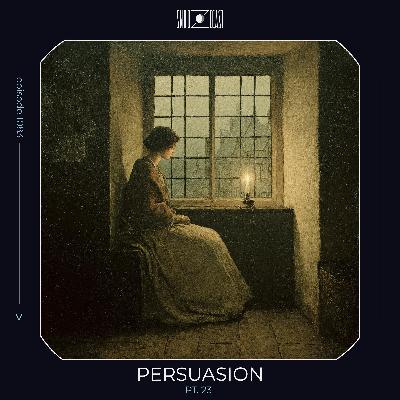
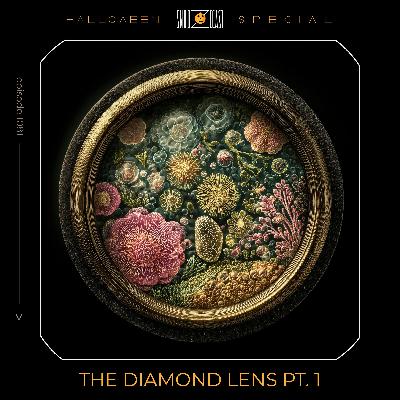
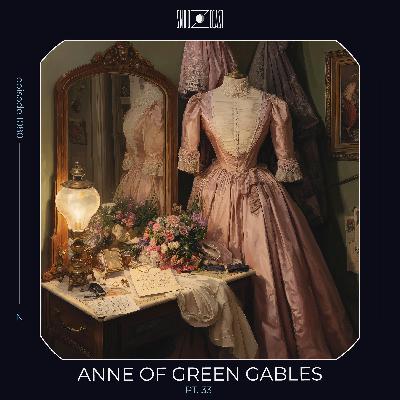
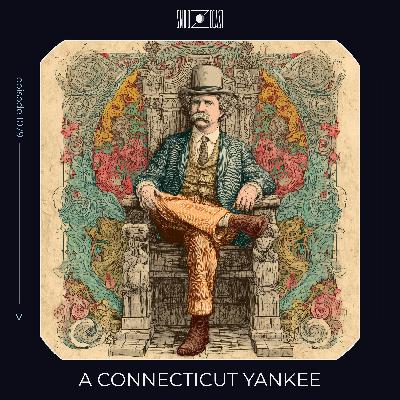

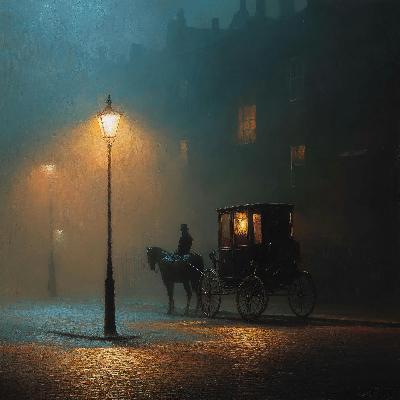
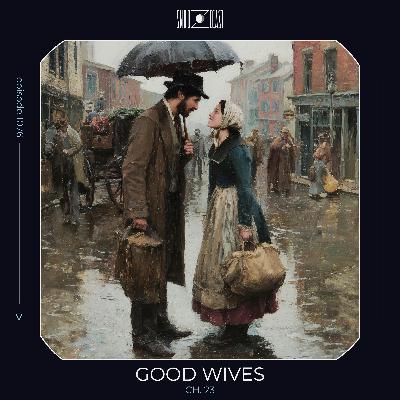

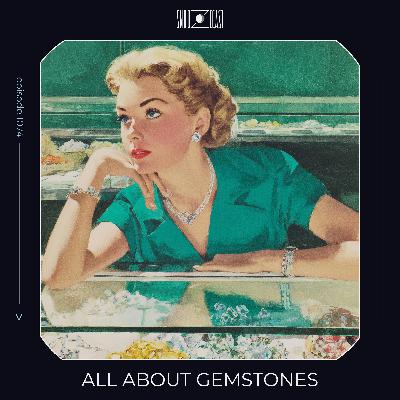
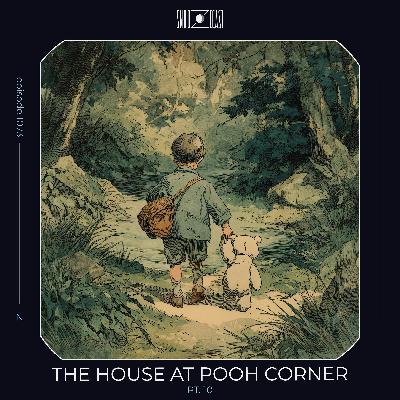
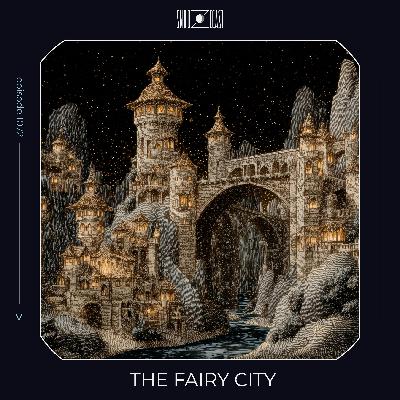

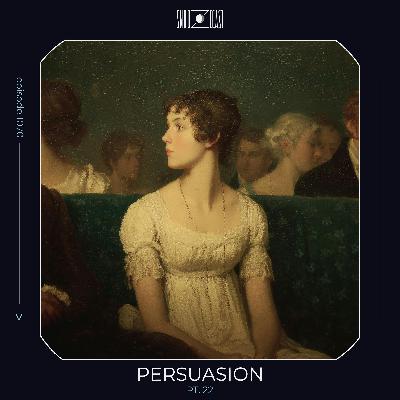
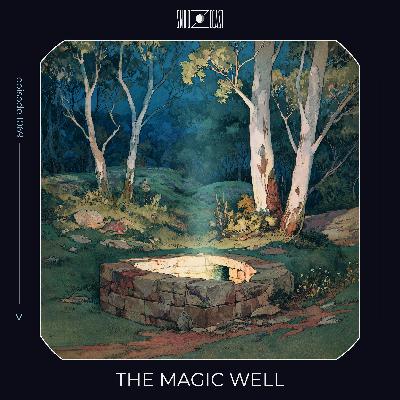
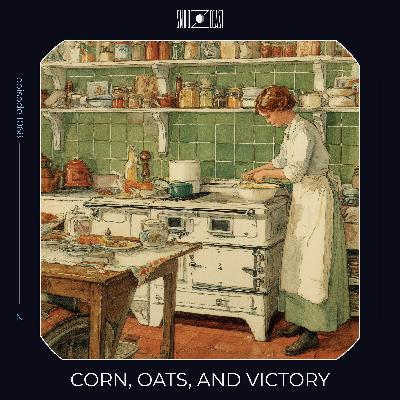
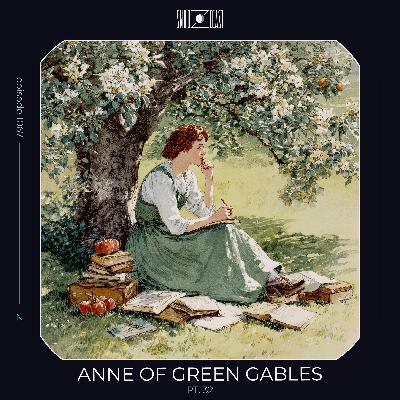





ads too loud! jarring!
where did it go?
Really enjoy the non fiction episodes!
Hi, i love your stories and it would be awesome if you would try to upload every day or at least a week?
This doesn't sound like Frankenstein to me....
As much as I try, I keep falling asleep before I get to hear the ending.
Sweet dreams Snoozecast. You have made slipping into sleep so much easier for me.
Hey, love this podcast to get to sleep. Just one thing, sometimes the music is way too loud in the beginning and I can't hear you speaking over it
thank you for existing
Well I know what I will be listening to (and dreaming about) tonight. yum!
Great podcast, really helping this troubled sleeper! Thank you 😊
A nice fairy tale for adults to send you off to Dreamland.
tried to get into this, but the start of each ep is jarring and wakes me up every time. I need to have something playing all night so will listen to episodes back to back, but the into wakes me without full every single time :( sorry
Here's a nice bedtime story about golf for all you sports fans out there. May your dreams be filled with victories and success.
thank you for adding better help at the beginning! sleep time may be easy but sometimes daytime is hard!
It is a great story. Please record the next part.
Been using for the past week. Definitely helps!
One of the best sleep podcasts out there. Feel your stress melt away! The background music is relaxing and leads seamlessly to the reading. Both of the narrators have beautiful, melodic voices. No jarring ads, if there are any I haven't noticed.
you guys are amazing keep going!
I sleep so much better since I started listening to Snoozecast! I love listening to the stories, many of which I've never heard before, or have only heard adaptions in the past. Thank you so much for creating this awesome podcast!